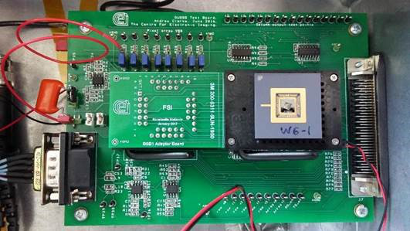New light imagers for new discoveries in science

An OU academic has received funding to develop single photon visible light imagers which could lead to new discoveries in science and technology.
Dr Konstantin Stefanov, Senior Research Fellow in the Centre for Electronic Imaging in the OU’s School of Physical Sciences, is leading the one-year Single Photon Visible Light Image Sensors for Science and Technology project. Single photon imagers can distinguish and count individual photons, which eliminates the readout noise affecting the images from traditional devices.
This project is part of the ATTRACT call under EU’s H2020 programme, which funds 170 breakthrough technology concepts in the domain of detection and imaging technologies across Europe. Each project is awarded €100,000 in seed funding to carry out their idea.
This project, in partnership with the European Southern Observatory, will investigate innovative ways to realise single photon visible light imagers for a number of applications in astronomy, quantum technologies, autonomous systems, and life sciences.
Dr Stefanov said: “This project will allow us to perform initial work on several innovative image sensor designs targeting single photon imaging for science and technology. The image sensors are expected to open up exciting new applications for noise-free, single photon imaging in a large number of areas, leading to potential discoveries."
Contact our news team
For all out of hours enquiries, please telephone +44 (0)7901 515891
Contact detailsNews & articles

OU gets £106k from UKRI for a project to assess AI-enhanced grant peer review
The Open University has secured £106,078 in funding to lead a new research project exploring how AI and large language models can transform the peer review process for research grants.